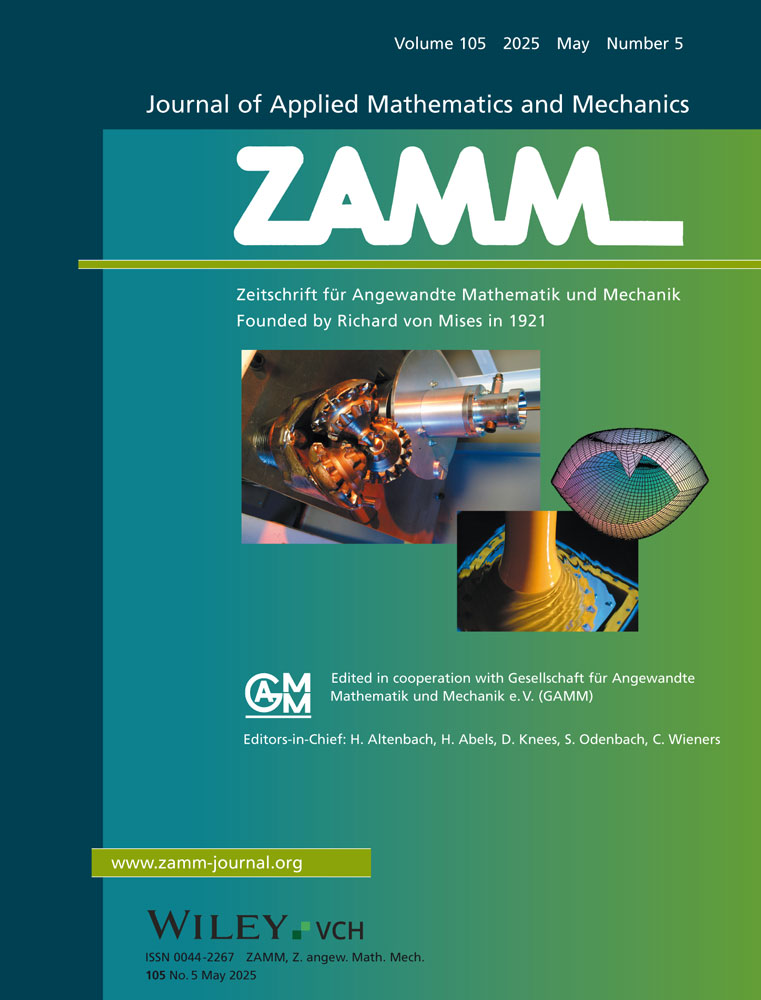Response of a sandwich composite beam comprised of a layer of an elastic solid described by an implicit constitutive relation
Abstract
We study a sandwich beam composed of a beam of rectangular cross-section made of rubber, to which are attached two thin metallic strips made of titanium alloy (the thickness of the metallic strips are of the order of 2%–8% of the thickness of the rubber beam). For the metallic layers at the ends we assume a relatively new constitutive equation, wherein the linearized strain tensor is assumed a function of the Cauchy stress tensor. For the central layer which we assume is comprised of rubber, considering small gradient of the displacement field, which implies that the strains are small, we use a classical linearized constitutive equation. The equations for the sandwich beam are solved numerically using the finite difference method, and two problems are studied, a cantilever beam and a beam loaded at three points. In both cases we apply concentrated loads. The results are compared with the predictions of the linearized theory for sandwich beams, and we also compare the results, with the case of a beam made purely of rubber. We find that for the same deflection the composite beam can support more than 1000 times the load as a purely polymeric or rubber beam with very thin strips of metallic alloys thereby decreasing the weight as well as cost of the beam were it to be a fully metallic beam.




